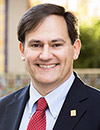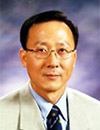Plenary Event
Astronomical Applications Plenary
6 August 2025 • 8:00 AM - 10:10 AM PDT | Conv. Ctr. Room 6A
Session Chairs: Allison Barto, BAE Systems, Inc. (United States) and Daewook Kim, Wyant College of Optical Sciences (United States)
8:00 AM - 8:10 AM
Welcome and Opening Remarks
8:10 AM – 8:50 AM:
When bigger really is better: extremely large optics enabling unique science
Outstanding science is enabled by telescopes of all sizes, but the high spatial resolution and sensitivity of the largest telescopes are required by many of the most compelling and unique science cases. Using representative examples of large/giant telescopes from the recent past and present, we will review how large optics have enabled an improved understanding of our Universe and look toward a future with even larger telescopes on the ground and in space.
Buell T. Jannuzi, Director of Steward Observatory and Head of the Department of Astronomy of The University of Arizona since 2012, previously served as the Director of Kitt Peak National Observatory and Associate Director of NOAO (now NOIRLab). He is PI for the fabrication of the 8.4m diameter primary mirror segments for the Giant Magellan Telescope (GMT). He has served on Boards or Science Advisory Committees for many observatories, including NASA’s Spitzer Space Telescope, NASA’s Fermi Space Telescope, the Gemini Observatory, TMT, the Large Binocular Telescope Observatory, the Large Synoptic Survey Telescope (now Vera C. Rubin Observatory), and the GMT.
8:50 AM – 9:30 AM:
To be determined
9:30 AM – 10:10 AM:
To be determined
Stacey Sueoka
National Solar Observatory (United States)
MENU: Coffee, decaf, and tea will be available outside the presentation room.
SETUP: Theater style seating.
8:00 AM - 8:10 AM
Welcome and Opening Remarks
8:10 AM – 8:50 AM:
When bigger really is better: extremely large optics enabling unique science
 |
Buell T. Jannuzi
The Univ. of Arizona (United States) |
Outstanding science is enabled by telescopes of all sizes, but the high spatial resolution and sensitivity of the largest telescopes are required by many of the most compelling and unique science cases. Using representative examples of large/giant telescopes from the recent past and present, we will review how large optics have enabled an improved understanding of our Universe and look toward a future with even larger telescopes on the ground and in space.
Buell T. Jannuzi, Director of Steward Observatory and Head of the Department of Astronomy of The University of Arizona since 2012, previously served as the Director of Kitt Peak National Observatory and Associate Director of NOAO (now NOIRLab). He is PI for the fabrication of the 8.4m diameter primary mirror segments for the Giant Magellan Telescope (GMT). He has served on Boards or Science Advisory Committees for many observatories, including NASA’s Spitzer Space Telescope, NASA’s Fermi Space Telescope, the Gemini Observatory, TMT, the Large Binocular Telescope Observatory, the Large Synoptic Survey Telescope (now Vera C. Rubin Observatory), and the GMT.
8:50 AM – 9:30 AM:
To be determined
 |
Sug-Whan Kim
Yonsei Univ. (Korea, Republic of) |
9:30 AM – 10:10 AM:
To be determined
Stacey Sueoka
National Solar Observatory (United States)
Event Details
FORMAT: General session with live audience Q&A to follow presentations.MENU: Coffee, decaf, and tea will be available outside the presentation room.
SETUP: Theater style seating.
